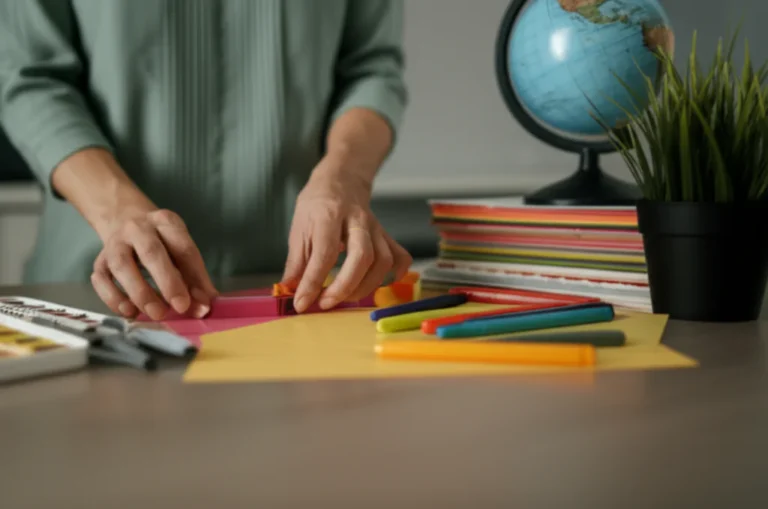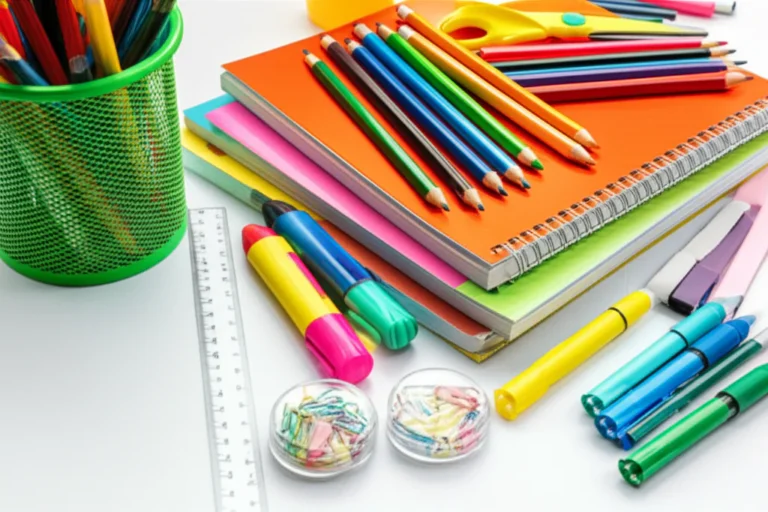Support our educational content for free when you purchase through links on our site. Learn more
Do Teachers Pay Out of Pocket for School Supplies? [2024]
Imagine this: You walk into a classroom filled with eager students, ready to learn and explore. But as you look around, you notice something unsettling. The shelves are empty, the desks are bare, and there are no supplies in sight. How can a classroom function without the necessary tools for education? Unfortunately, this is a reality for many teachers who are forced to pay out of pocket for school supplies.
Quick Answer
Yes, teachers do pay out of pocket for school supplies. In fact, more than 90 percent of teachers spend their own money to ensure their students have the resources they need to succeed. This includes everything from pencils and paper to books and art supplies. The average teacher spends around $500 per year on classroom supplies, with some spending even more. This financial burden not only affects teachers’ personal finances but also highlights the systemic issue of underfunding in education.
Quick Tips and Facts
- Over 90 percent of teachers spend their own money on school supplies.
- The average teacher spends around $500 per year on classroom supplies.
- Some teachers spend even more, with reports of spending up to $1,000 or more.
- The lack of funding for school supplies is a systemic issue in education.
- Teachers often rely on donations and fundraising to supplement their classroom budgets.
- Underfunding in education affects students’ access to quality resources and materials.
Background: The Financial Strain on Teachers
Teaching is a noble profession, but it comes with its fair share of challenges. One of the most significant challenges is the financial strain that teachers face. While it may come as a surprise to some, teachers are not provided with an unlimited supply of resources and materials for their classrooms. In fact, many teachers are given a limited budget, if any at all, to purchase the supplies they need.
This lack of funding puts teachers in a difficult position. They are passionate about their work and want to provide the best education possible for their students. However, without the necessary supplies, it becomes increasingly challenging to create a conducive learning environment. As a result, many teachers dip into their own pockets to bridge the gap.
Teachers Are Spending Out of Pocket to Prepare to Return to Class
As the new school year approaches, teachers are busy preparing their classrooms for the arrival of their students. From decorating bulletin boards to organizing supplies, there is a lot to be done. However, this preparation often comes at a cost. Teachers are spending their own money to ensure their classrooms are ready for the first day of school.
According to a recent survey, 50 percent of teachers spend over $100 to set up their classrooms for the first day of school. This includes purchasing basic supplies like pencils, paper, and notebooks, as well as decorations and organizational tools. For teachers at Title 1 schools, where a large percentage of students come from low-income families, the cost is even higher. In fact, 62 percent of teachers at Title 1 schools spend $100 or more on back-to-school supplies.
Teachers Are Relying on Amazon Wishlists
In an effort to alleviate some of the financial burden, many teachers are turning to online platforms like Amazon to create wishlists for their classrooms. These wishlists allow teachers to request specific items they need for their students, such as books, art supplies, and technology. Friends, family, and even strangers can then purchase these items and have them shipped directly to the teacher’s classroom.
This trend has gained popularity in recent years, with more and more teachers relying on Amazon wishlists to fund their classrooms. In fact, a study analyzing 27 teacher wishlists found that the average cost of a wishlist for the 2023/2024 school year is $281, a 12.4% increase since 2021. The most requested items on these wishlists include loose leaf paper, purple school glue, and backpacks.
While Amazon wishlists can be a helpful tool for teachers, they are not a long-term solution to the problem of underfunding in education. Teachers should not have to rely on the generosity of others to provide basic supplies for their students. It is essential that we address the systemic issue of underfunding and ensure that all students have access to the resources they need to succeed.
Teachers Spend on Classrooms All Year
The financial burden on teachers does not end with the back-to-school season. Throughout the year, teachers continue to spend their own money on classroom supplies. From replenishing basic supplies to purchasing new books and materials, the costs add up.
A survey conducted by Adopt A Classroom found that teachers spent an average of $860 out of pocket on classroom supplies during the school year. This includes everything from art supplies and books to technology and furniture. In addition to the financial strain, 16 percent of teachers reported working a second job to support their education career.
The survey also revealed that the average classroom budget last year was $200, and 84 percent of teachers said they spent money out of their own pocket to cover costs for basic school supplies. This highlights the stark reality that teachers are often left to fill the gaps in funding themselves.
Are Teachers Digging Even Deeper to Afford Classroom Necessities?
The financial strain on teachers is not limited to school supplies. In many cases, teachers are also responsible for purchasing other necessities for their classrooms, such as snacks, cleaning supplies, and even furniture. These additional expenses can quickly add up, further exacerbating the financial burden on teachers.
According to a survey conducted by the National Center for Education Statistics, 34 percent of teachers said the quantity of supplies their school provides is inadequate. Educators who responded with this sentiment were 59 percent more likely to spend over $200 out of pocket. Additionally, 20 percent of teachers said the quality of supplies their school provides is inadequate, and educators with this response were 50 percent more likely to spend over $200.
The lack of adequate funding for classroom necessities not only puts a strain on teachers’ finances but also affects students’ access to quality resources. It is crucial that we prioritize education funding to ensure that all students have equal opportunities to succeed.
FAQ
Do teachers really pay for school supplies?
Yes, teachers do pay for school supplies. More than 90 percent of teachers spend their own money to provide the necessary resources for their classrooms.
Read more about “Teacher Supplies Online: Your Ultimate Guide …”
How much do teachers spend out of pocket?
The average teacher spends around $500 per year on classroom supplies. However, some teachers spend even more, with reports of spending up to $1,000 or more.
Read more about “How Much Do Teachers Spend on Supplies in California? …”
Are teachers digging even deeper to afford classroom necessities?
Yes, teachers often have to dig even deeper into their own pockets to afford classroom necessities. This includes purchasing snacks, cleaning supplies, and even furniture for their classrooms.
Are teachers allowed to make you empty your pockets?
No, teachers are not allowed to make students empty their pockets to pay for school supplies. It is the responsibility of the school and the education system to provide the necessary resources for students.
Conclusion
The fact that teachers have to pay out of pocket for school supplies is a clear indication of the systemic issue of underfunding in education. It is unfair to expect teachers to bear the financial burden of providing basic resources for their students.
While platforms like Amazon wishlists can provide temporary relief, they are not a long-term solution. It is essential that we advocate for increased funding for education and ensure that all students have access to the resources they need to succeed.
In conclusion, teachers should not have to spend their own money on school supplies. It is time for us to address the issue of underfunding in education and provide teachers with the support they need to create a conducive learning environment for their students.
Recommended Links
- Classroom Supplies
- Teachers’ Guides
- Teacher Planners and Organizers
- Seasonal Classroom Decorations
- 10 Must-Have Teacher Store Supplies for 2024






